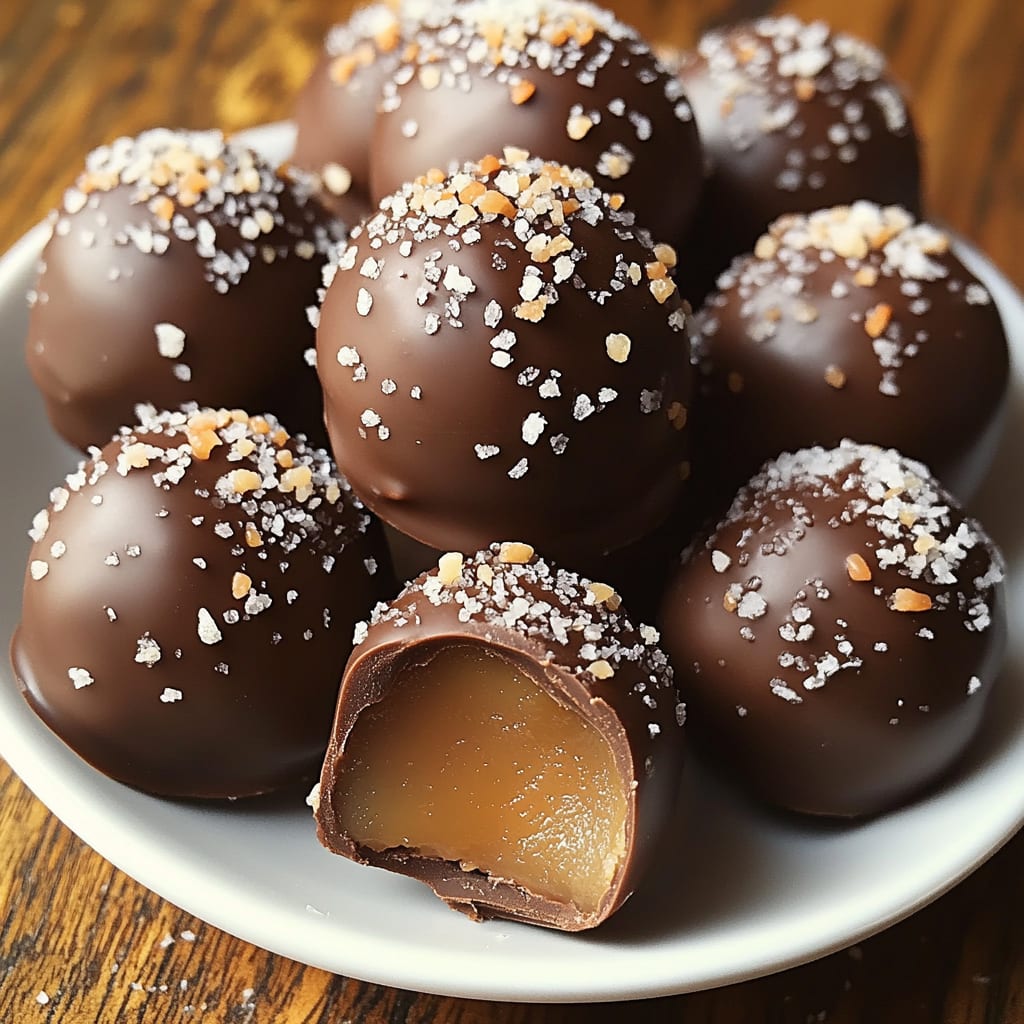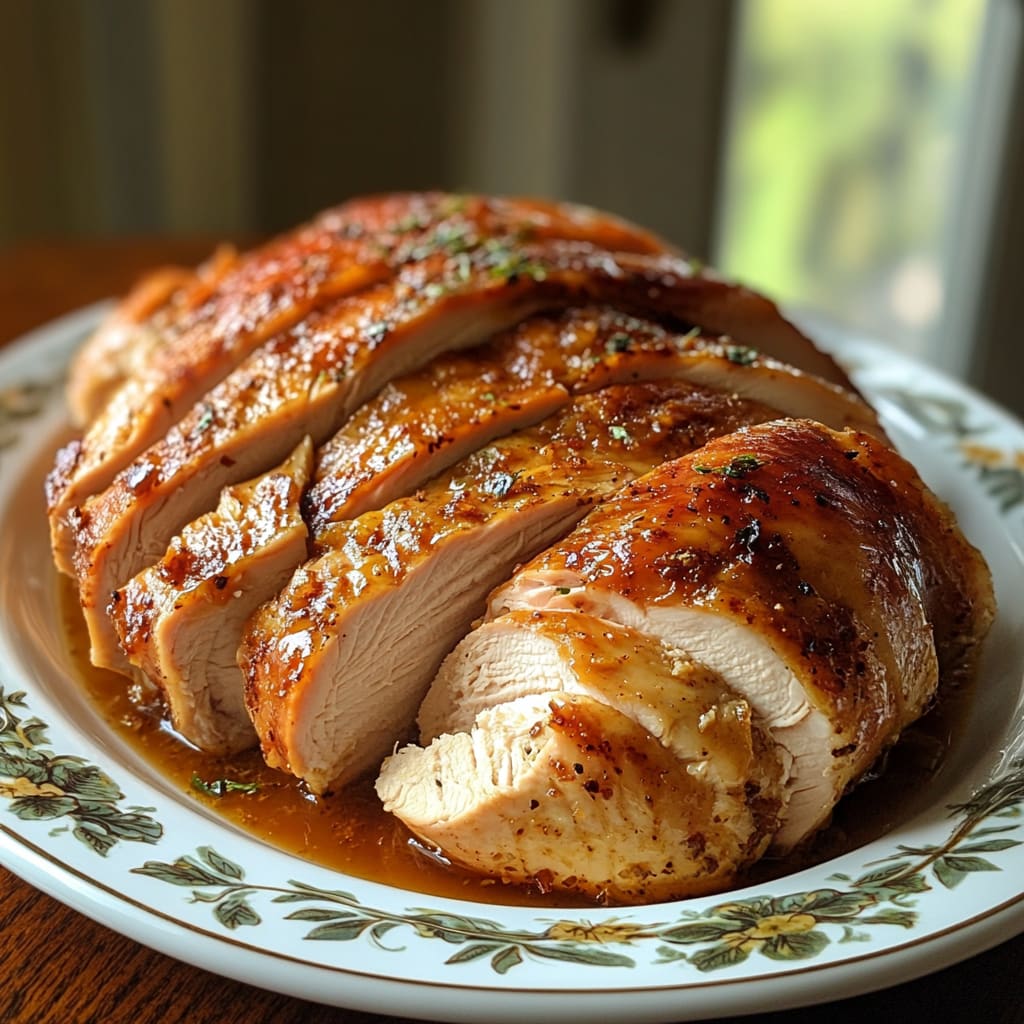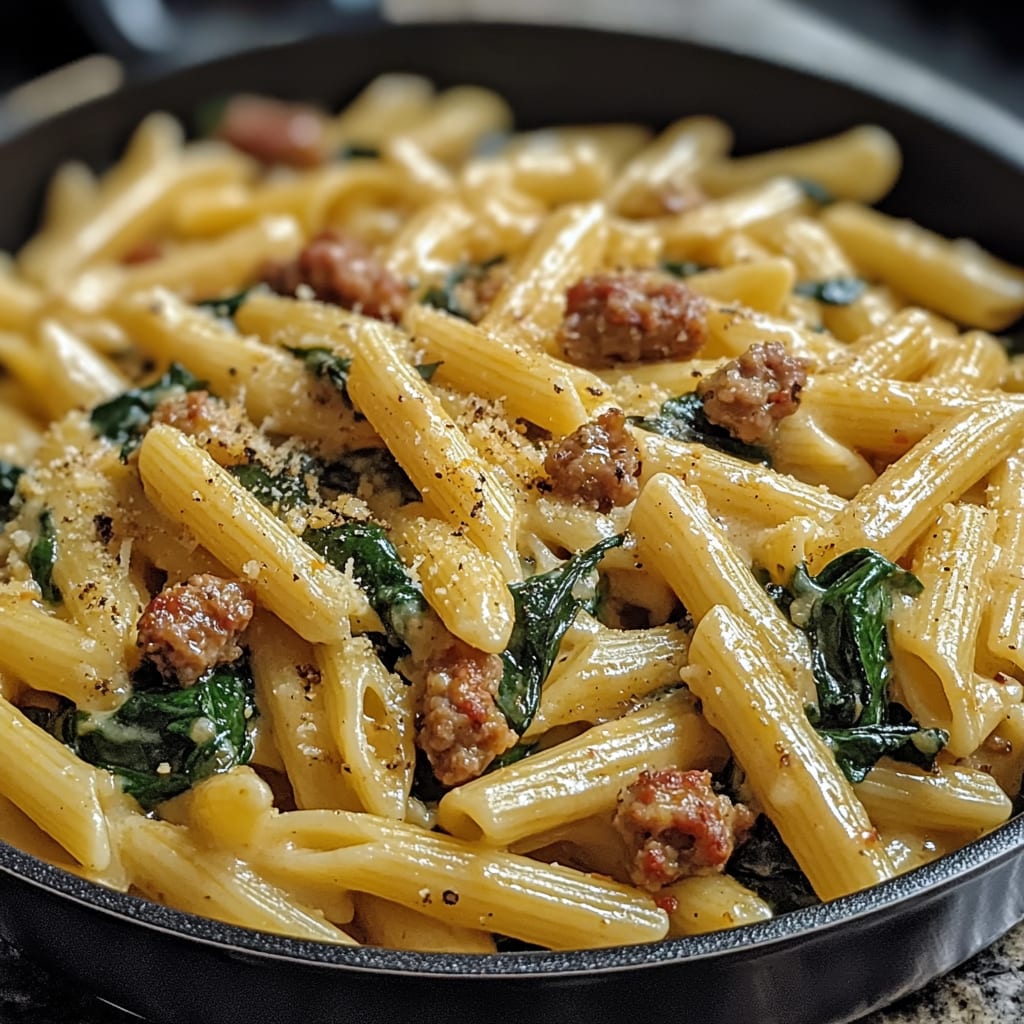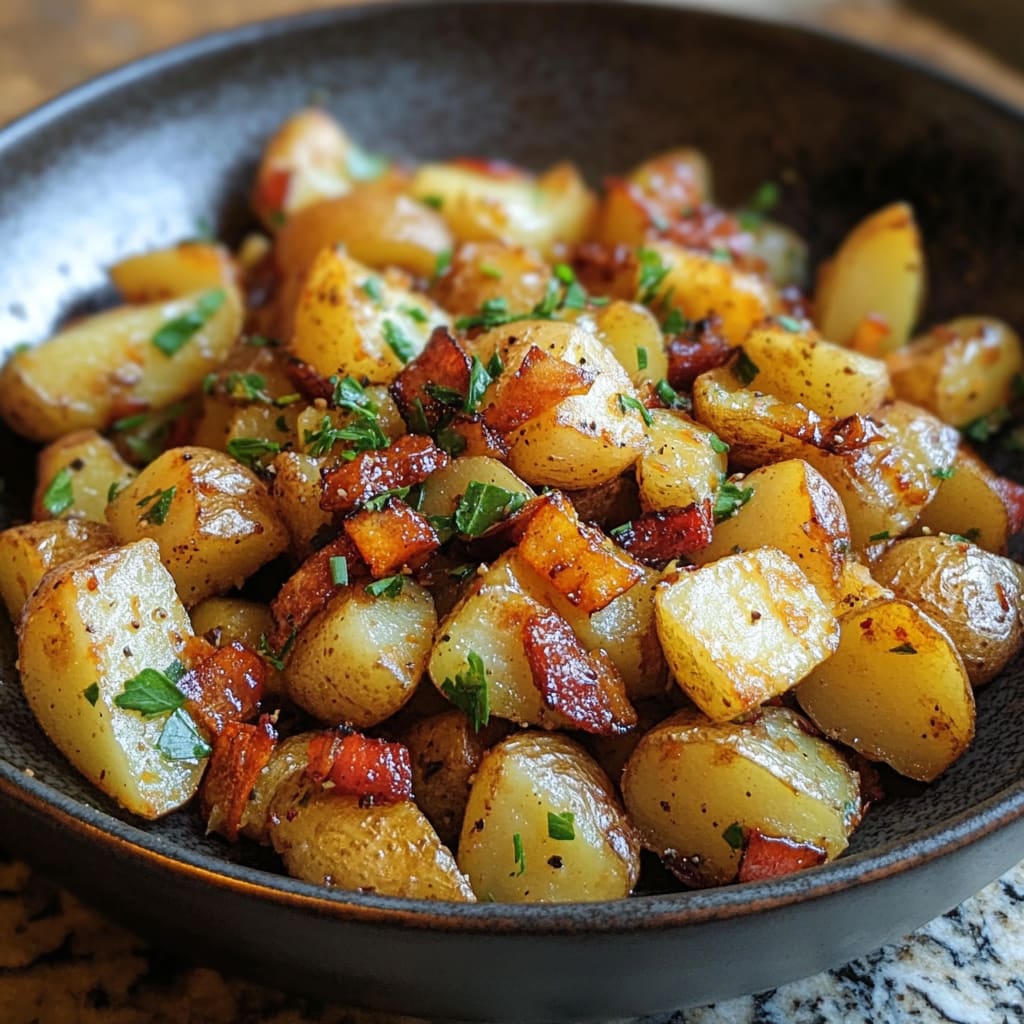Imagine biting into a velvety smooth chocolate shell that gives way to a luscious, buttery caramel center finished with a delicate hint of sea salt. These Salted Caramel Truffles are the perfect balance of sweet, salty, and rich—a truly irresistible treat that elevates any dessert platter or gift box. The contrast between the deep chocolate coating and the golden caramel interior creates a sensory experience that chocolate lovers dream about. You’ll learn how to create these luxurious confections with simple ingredients and straightforward techniques that yield professional-quality results.
Why You’ll Love This Recipe
These Salted Caramel Truffles will quickly become your go-to homemade candy for several compelling reasons. First, they deliver an incredible textural experience—the snap of tempered chocolate giving way to the silky, flowing caramel creates a moment of pure indulgence. The flavor complexity is remarkable, with the bitter notes of dark chocolate complementing the buttery sweetness of caramel, while flaky sea salt cuts through the richness with bursts of salinity.
Despite their sophisticated flavor profile and elegant appearance, these caramel chocolate truffles are surprisingly approachable to make. The recipe uses common pantry ingredients, and each step is manageable even for novice candy makers. You’ll be amazed at how such simple components transform into something that rivals expensive chocolatier offerings.
These truffles also make impressive gifts—package them in a beautiful box, and nobody would guess they’re homemade. The best part? You can customize them to your exact taste preferences, adjusting the sweetness, salt level, or chocolate type to create your perfect truffle experience.
Ingredients
For the Caramel Filling:
- 1 cup (200g) granulated sugar
- 6 tablespoons (85g) unsalted butter, room temperature, cut into pieces
- 1/2 cup (120ml) heavy cream, room temperature
- 1 teaspoon pure vanilla extract
- 1/2 teaspoon flaky sea salt (like Maldon), plus extra for sprinkling
For the Chocolate Coating:
- 12 ounces (340g) high-quality dark chocolate (60-70% cacao), finely chopped
- 1 tablespoon (15ml) neutral oil (like grapeseed or coconut)
The quality of chocolate significantly impacts the final result—choose the best you can afford for these homemade chocolate caramel truffles. The heavy cream creates the perfect silky texture for the caramel, while the flaky sea salt adds both flavor and a delightful textural contrast. Make sure all ingredients are measured precisely as candy-making requires accuracy for the best results.
Pro Tips
Master Caramel Crystallization Prevention: The most critical aspect of making Salted Caramel Truffles is avoiding sugar crystallization during the caramel-making process. Never stir the sugar once it begins to melt—instead, gently swirl the pan if needed. Make sure your pan is impeccably clean before starting, as even tiny sugar crystals can trigger widespread crystallization. A splash of lemon juice or corn syrup in your sugar mixture can also help prevent crystallization by interfering with crystal formation.
Perfect Chocolate Tempering Shortcut: While professional tempering gives chocolate its snap and shine, you can achieve similar results with a simpler method. After melting your chocolate, set aside one-third of it. Once the remaining chocolate reaches 120°F, add the reserved chocolate and stir until completely melted and cooled to 88-90°F for dark chocolate. This “seeding” method creates properly crystallized chocolate without complex tempering equipment.
Temperature Control Is Everything: Use a reliable candy thermometer throughout the process. For caramel, heat to 245-250°F for a soft but moldable consistency. When dipping truffles, maintain chocolate at 88-90°F for optimal coating. If the chocolate starts to thicken, briefly warm it over a hot water bath for a few seconds to restore fluidity without overheating.
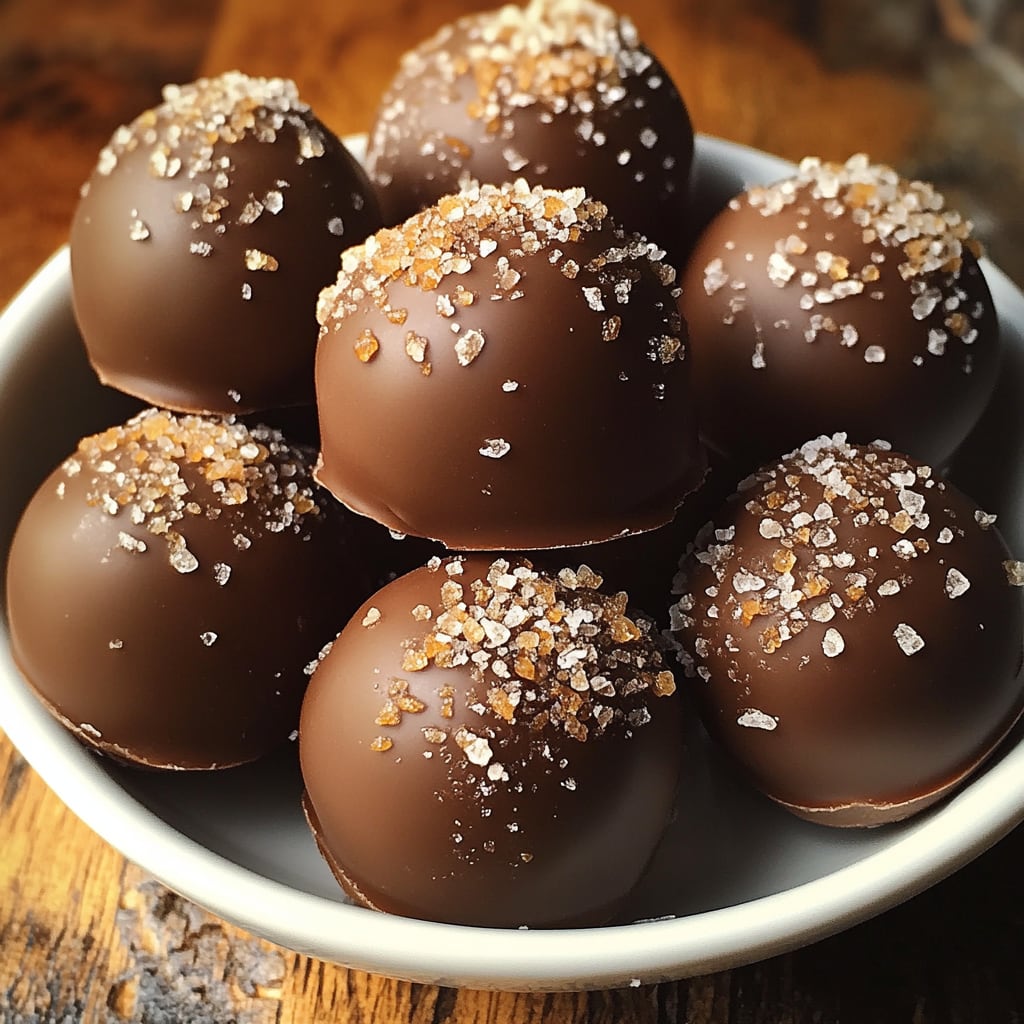
Instructions
Step 1: Prepare the Caramel Base
Line an 8×8-inch baking dish with parchment paper, extending paper up the sides for easy removal later. In a heavy-bottomed medium saucepan, spread sugar in an even layer. Heat over medium heat, watching carefully as the sugar begins to melt around the edges. Resist the urge to stir—instead, gently tilt and swirl the pan to ensure even melting. Continue until all sugar has melted and turned a deep amber color (about 8-10 minutes).
Step 2: Complete the Caramel
Once the sugar has completely melted and reached a deep amber color, carefully add the butter pieces (the mixture will bubble vigorously). Whisk until butter is fully incorporated. Remove the pan from heat and slowly pour in the heavy cream while continuously whisking (mixture will bubble again). Return to low heat and whisk until smooth. Stir in vanilla extract and sea salt. Pour the finished caramel into your lined baking dish and let it cool at room temperature for 30 minutes before transferring to the refrigerator for at least 2 hours.
Step 3: Form the Truffle Centers
Once the caramel is firm (but still slightly pliable), remove from refrigerator and parchment paper. Using a sharp knife, cut into 1-inch squares. With lightly oiled hands, quickly roll each square into a ball and place on a parchment-lined baking sheet. If the caramel becomes too soft, return to refrigerator for 5-10 minutes. Once all balls are formed, place in freezer for 15-20 minutes to firm up before dipping.
Step 4: Prepare the Chocolate Coating
While the caramel balls chill, create a double boiler by placing a heatproof bowl over a pot of barely simmering water (ensure the bowl doesn’t touch the water). Add two-thirds of your chopped chocolate and stir occasionally until completely melted (around 115-120°F). Remove from heat and add remaining chocolate, stirring until smooth and cooled to 88-90°F. Stir in the tablespoon of oil to thin the chocolate slightly for easier dipping.
Step 5: Coat the Truffles
Working with 4-5 caramel balls at a time (keeping the rest in the freezer), use a dipping fork or two spoons to completely submerge each ball in the tempered chocolate. Lift out, tap gently to remove excess, and place on a parchment-lined baking sheet. Immediately sprinkle with a tiny pinch of flaky sea salt before the chocolate sets. Repeat with remaining caramel balls, returning the chocolate to the warm water bath briefly if it begins to thicken. Allow Salted Caramel Truffles to set completely at room temperature (about 1 hour) before serving or packaging.
Variations
Dark Chocolate Sea Salt Truffles: For an even more intense chocolate experience, increase the cacao percentage to 80-85% for the coating and add 2 tablespoons of cocoa powder to the caramel mixture while cooking. The deeper chocolate flavor creates a sophisticated truffle that pairs beautifully with after-dinner coffee or rich red wines.
Spiced Caramel Truffles: Transform your Salted Caramel Truffles by incorporating warming spices into the caramel. Add 1/4 teaspoon of cinnamon, a pinch of cayenne pepper, and a tiny pinch of ground cardamom to the caramel mixture after removing it from heat. The subtle heat builds gradually, creating an intriguing flavor profile that’s particularly appealing during fall and winter months.
Vegan Salted Caramel Truffles: Substitute the butter with coconut oil and the heavy cream with full-fat coconut cream. Use dairy-free dark chocolate for the coating. These plant-based homemade caramel truffles maintain the luxurious mouthfeel while accommodating dietary restrictions, though the caramel will have subtle coconut undertones that complement the chocolate beautifully.
Storage and Serving
These Salted Caramel Truffles will keep for up to 2 weeks when stored in an airtight container at cool room temperature (65-70°F). For longer storage, refrigerate for up to 3 weeks, but always bring them to room temperature before serving to allow the caramel to soften slightly and the flavors to fully develop. Avoid freezing the finished truffles as this can affect the texture of both the caramel and the chocolate coating.
For an elegant presentation, serve these chocolate caramel salt truffles on a slate board alongside fresh berries and a small bowl of additional flaky sea salt for guests who enjoy an extra salty-sweet contrast. They also make a stunning addition to a dessert charcuterie board paired with complementary items like candied nuts, dried fruits, and small cookies.
For gifting, place truffles in paper candy cups inside a beautiful box tied with ribbon. Including a note about the handmade nature and premium ingredients elevates the gift to something truly special and personal.
FAQs
Why did my caramel crystallize and become grainy?
Crystallization usually happens when sugar crystals form on the sides of the pan or when stirring too early in the process. To prevent this, brush down the sides of the pan with a wet pastry brush and avoid stirring until after the butter has been added.
Can I make these truffles without a candy thermometer?
Yes, though it’s more challenging. For the caramel, watch for a deep amber color and test a small amount dropped in cold water—it should form a firm but malleable ball. For chocolate, the “seeding” method described in the Pro Tips section can be used with careful attention to texture rather than exact temperature.
Why are my truffles leaking caramel after coating?
If caramel centers weren’t cold enough before dipping or if the chocolate was too hot, leaking can occur. Make sure caramel centers are very firm from the freezer and that your chocolate has cooled to the proper temperature before dipping.
How can I get a shiny finish on my truffles?
Properly tempered chocolate is key to shine. If using the seeding method isn’t giving you the shine you want, you can brush the set truffles very lightly with a small amount of edible luster dust for an elegant sheen.
My truffles are too soft to hold their shape. How can I fix this?
If your caramel didn’t reach a high enough temperature, it may be too soft. You can re-melt it, bring to 248°F, then cool again. Alternatively, freeze the centers longer before dipping and store the finished truffles in the refrigerator.
Conclusion
These Salted Caramel Truffles are confectionery perfection at its finest — delicate shells of snappy chocolate encasing pools of golden, buttery caramel enhanced with the perfect hint of salt. They’re the kind of treat that transforms ordinary moments into special occasions, whether enjoyed as a personal indulgence with your evening coffee or presented as a heartfelt homemade gift. Master this recipe, and you’ll never need to visit a specialty chocolate shop again—your own kitchen will produce treats worthy of the most discerning chocolate connoisseur.
Print
Salted Caramel Truffles
- Prep Time: 30 minutes
- Cook Time: 20 minutes
- Total Time: 2 hours 50 minutes
- Yield: 24 truffles 1x
- Category: Dessert
- Method: Mixing, heating, cooling, rolling, dipping
- Cuisine: Americaine
Description
Salted Caramel Truffles: Indulgent dark chocolate filled with gooey caramel and a hint of salty goodness. Perfect for satisfying sweet cravings!
Ingredients
- 1 cup (200g) granulated sugar
- 6 tablespoons (85g) unsalted butter, room temperature, cut into pieces
- 1/2 cup (120ml) heavy cream, room temperature
- 1 teaspoon pure vanilla extract
- 1/2 teaspoon flaky sea salt (like Maldon), plus extra for sprinkling
Instructions
- Step 1: Prepare the Caramel Base Line an 8×8-inch baking dish with parchment paper, extending paper up the sides for easy removal later. In a heavy-bottomed medium saucepan, spread sugar in an even layer. Heat over medium heat, watching carefully as the sugar begins to melt around the edges. Resist the urge to stir—instead, gently tilt and swirl the pan to ensure even melting. Continue until all sugar has melted and turned a deep amber color (about 8-10 minutes).
- Step 2: Complete the Caramel Once the sugar has completely melted and reached a deep amber color, carefully add the butter pieces (the mixture will bubble vigorously). Whisk until butter is fully incorporated. Remove the pan from heat and slowly pour in the heavy cream while continuously whisking (mixture will bubble again). Return to low heat and whisk until smooth. Stir in vanilla extract and sea salt. Pour the finished caramel into your lined baking dish and let it cool at room temperature for 30 minutes before transferring to the refrigerator for at least 2 hours.
- Step 3: Form the Truffle Centers Once the caramel is firm (but still slightly pliable), remove from refrigerator and parchment paper. Using a sharp knife, cut into 1-inch squares. With lightly oiled hands, quickly roll each square into a ball and place on a parchment-lined baking sheet. If the caramel becomes too soft, return to refrigerator for 5-10 minutes. Once all balls are formed, place in freezer for 15-20 minutes to firm up before dipping.
- Step 4: Prepare the Chocolate Coating While the caramel balls chill, create a double boiler by placing a heatproof bowl over a pot of barely simmering water (ensure the bowl doesn’t touch the water). Add two-thirds of your chopped chocolate and stir occasionally until completely melted (around 115-120°F). Remove from heat and add remaining chocolate, stirring until smooth and cooled to 88-90°F. Stir in the tablespoon of oil to thin the chocolate slightly for easier dipping.
- Step 5: Coat the Truffles Working with 4-5 caramel balls at a time (keeping the rest in the freezer), use a dipping fork or two spoons to completely submerge each ball in the tempered chocolate. Lift out, tap gently to remove excess, and place on a parchment-lined baking sheet. Immediately sprinkle with a tiny pinch of flaky sea salt before the chocolate sets. Repeat with remaining caramel balls, returning the chocolate to the warm water bath briefly if it begins to thicken. Allow **Salted Caramel Truffles** to set completely at room temperature (about 1 hour) before serving or packaging.
Notes
Fresh ingredients will always yield the best flavor results.
Nutrition
- Serving Size: 1 truffle
- Calories: 150 calories
- Sugar: 13 grams
- Sodium: 50 mg
- Fat: 10 grams
- Saturated Fat: 6 grams
- Unsaturated Fat: 4 grams
- Trans Fat: 0 grams
- Carbohydrates: 15 grams
- Fiber: 1 gram
- Protein: 1 gram
- Cholesterol: 15 mg

